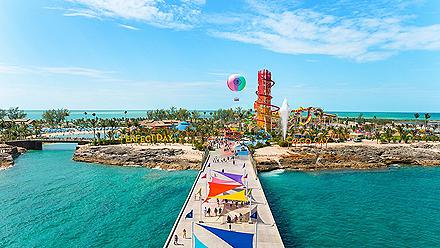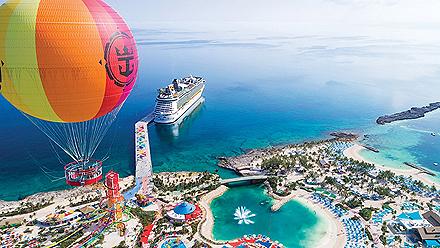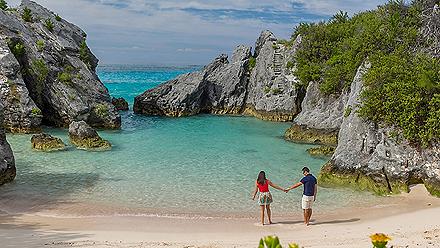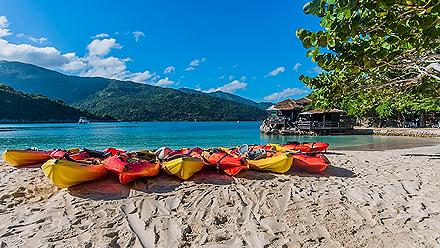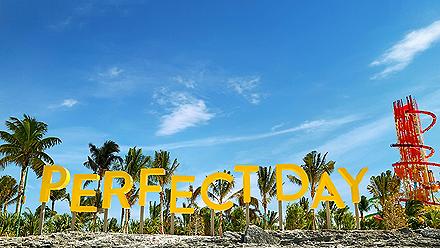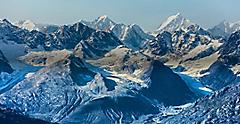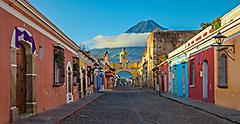Visiting 7 Natural Wonders of the World
By Amanda Mesa | Published on December 7, 2021
Even if you can't name them all, you've probably heard of the 7 Wonders of the World. However, the lesser-known truth is that there are several different categories of world wonders. The Seven Wonders of the Ancient World, for example, include man-made architectural marvels that date back millennia, such as the Great Pyramid of Giza, the Temple of Artemis at Ephesus and the Colossus of Rhodes. Very few of these still exist today, but the ones that still stand strong are popular cruise destinations.
Then there's the 7 Natural Wonders of the World. As the name implies, this group includes nature's most majestic feats — such as the Grand Canyon, Mount Everest, the Great Barrier Reef and the Northern Lights. The list has been altered and edited by many different people over the years, and in 2008 an organization was created by conservation and exploration experts to protect and promote these awe-inspiring wonders.
While they're not all easy to reach, any world traveler such as yourself can visit or catch a glimpse of all seven Natural Wonders. Here's what they are, how to see them and why they're worth adding to your adventure bucket list.
Experience the Wonder of the Grand Canyon

Snorkel or Scuba Drive in the Great Barrier Reef
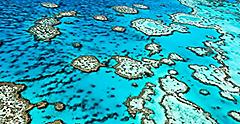
Australia's Great Barrier Reef is the world's largest coral reef system — a distinction which has earned it a spot on the Seven Natural Wonders list. Encompassing 133,000 miles, it's comprises more than 2,900 distinct reefs and 900 islands, and it supports one of the world's most diverse ecosystems. It's so big that it can even be seen from outer space.
While perhaps not as easy to get to as the Grand Canyon, the Great Barrier Reef is still accessible via diving, snorkeling or kayaking tours. Most visitors start their adventures on dive boats departing from Port Douglas, Townsville, Cape Tribulation or the Queensland city of Cairns. If scuba diving isn't quite for you, you can join a snorkel or kayak tour — several set out from Master Magnetic Island, a small isle just off the coast of Townsville. But the best way to experience the reef is indeed underwater. Some of its residents include manta rays, blanket octopi, giant clams, and even humpback whales.
Travel on an Alaska Cruise to See the Northern Lights

As the only natural wonder not tied to one geographical location, the Northern Lights offer plenty of options to be seen all over the world. Unless you are traveling the world on a cruise to Alaska, the trick to seeing them is timing your visit right. This naturally occurring phenomenon, also known as the aurora borealis, appears as dancing bands or curtains of colored light in the sky. The aurora is caused by electrically charged particles that blow into our atmosphere from solar storms, so it's difficult to pinpoint exactly when or where it will appear. But research has shown your chance of catching the northern lights is best at certain times of the year in remote, northern places where skies are dark and light pollution is minimal.
Denali National Park in Alaska is a prime spot, especially in the fall, winter and early spring when the nights are longest. Tromso, Norway and Swedish Lapland are also good choices located in the heart of the aurora zone. You can even catch the Northern Lights from parts of Michigan's Upper Peninsula, though sightings here occur far less frequently than destinations closer to the Arctic Circle.
Book Now
Helicopter Tours above the Harbor of Rio de Janeiro
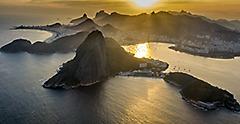
Another easily accessible natural wonder is the Harbor of Rio de Janeiro in Brazil, also known as Guanabara Bay. Formed by erosion from the Atlantic Ocean, it's surrounded by towering granite mountains and rock formations and dotted with beautiful islands. It's also the largest bay in the world by volume of water. Visitors have plenty of ways to experience this impressive place.
While visiting the Christ the Redeemer is an epic experience, for extraordinary breathtaking views, head to the skies on a helicopter tour — or via hang glider, if you're craving an adrenaline rush. Experienced mountaineers prefer to view it from the top of Sugarloaf Mountain, which is actually in the harbor and yields captivating views of the bay, the mountains and the city of Rio de Janeiro. But two of the easiest ways to experience this natural wonder include enjoying one of the fine, white sand beaches that hug it or setting out on a scenic boat tour that winds around its islands and rock formations.
Hear the Thunderous Roar of Victoria Falls
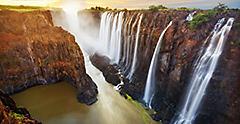
Hike the Volcano Summit of Paricutin
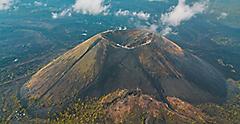
Visit Mount Everest to Admire its Majesty
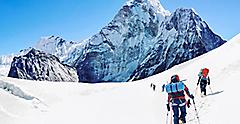
Take the Time - Travel to the World
While there are many world wonders these 7 Natural Wonders of the World represent some of nature's most impressive creations. Whether you feel most drawn to the Grand Canyon's surreal rock formations, the Great Barrier Reef's vibrant marine life, Mount Everest's soaring, snow-covered silhouette, or all seven wonders in equal measure, you should definitely try to visit as many as you can. Nothing compares to the sense of awe that accompanies seeing the Northern Lights firsthand or hearing the booming roar of Victoria Falls with your own ears. Take the time to enjoy our world, add these one-of-a-kind wonders to your travel vacation plans while keeping them in mind for future adventures.

